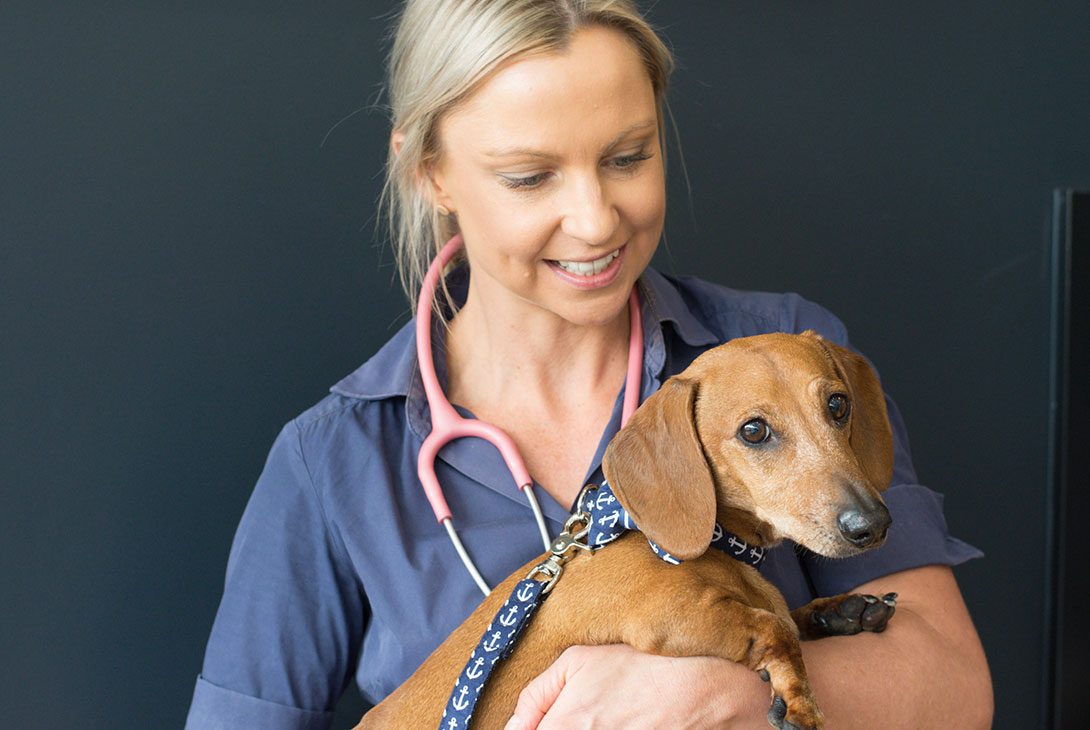
Dogtor Andy - Hotspots in Dogs
This month we’re going to do a deep dive into hot spots in dogs, a nasty skin condition that many dog owners unfortunately encounter at some point thanks to our hot weather.
What are hotspots?
Hotspots in dogs are essentially skin infections that transform rapidly, seemingly overnight into deep, painful wounds. The term ‘hotspot’ has been adopted because generally they appear as large, inflamed 'spots'. (Although I think 'hot–nasty skin wound' would be more appropriate but perhaps it doesn’t roll off the tongue so easily and vets are, well, busy creatures.)
What causes hotspots in dogs?
A hotspot is a skin infection but that doesn’t mean that the original cause is always bacteria. That bane of every Staffy owner’s existence, skin allergy, is to blame for a large proportion of hotspots in dogs. Other causes include mites, mosquitos, fleas and fungal infections (i.e. ringworm). Essentially, anything that causes dogs to itch and chew at their skin can lead to a hotspot. Bacteria can be an initial player or it may join the party once one of the other causes has led to itchy, broken skin. Once dogs start to itch or chew, it is very difficult to stop them which is one of the reasons that hot spots progress so quickly.
We often associate hotspots in dogs as a problem of warmer weather when the above causes are also rife but the reality is that we can see them all year round.
What breeds are susceptible to hotspots?
There are a number of dog breeds with thick coats that we see every summer presenting with hotspots in Australia. These include German Shepherds, Labradors, Golden Retrievers, Huskies and Rottweilers. However, thanks to the above causes, any dog that knows how to scratch or chew can develop a hotspot.
Are hotspots contagious?
This is a question that I’m asked often by worried pet owners. Are hotpots contagious for other dogs? Can they spread to humans? The answer depends on the cause. Hotspots caused by fungal infections such as ringworm can cause ringworm infections in both humans and dogs. Fleas can easily spread to other dogs but that doesn’t mean they will also cause a hotspot, the same is true for mites although they don’t tend to spread easily if your dog is otherwise well. Allergies to food, the environment and mosquitoes are of course not contagious and these are probably to blame for more hotspots than ringworm and mites.
So, the short answer to the question is, probably not, but until you’ve had it checked at the vet and successfully treated, then practice good hygiene with other animals including your family. No-one wants to be the ringworm kid at school.
Treatment of hotspots in dogs
Once a hotspot develops this is definitely a vet visit guys. It's a painful condition! For sure there are things that you can do to prevent minor rashes from developing into hotspots but trust me, because of the speed at which hotspots progress, the sooner you get your regular vet clinic involved the better. People do attempt to treat these at home but each cause will require a different treatment. Your vet can help determine whether there is an allergy at play, as opposed to bacteria, mosquitoes, mites, fleas or fungal infection and then provide a treatment tailored to the cause. Even with veterinary intervention, these can still become something that takes weeks to resolve and I’ve even had to take some unfortunate dogs to surgery to remove damaged skin from hotspots that spiraled out of control.
What I can suggest to help avoid a hotspot developing is that you keep something topical in your pet’s medicine cupboard for irritated skin. Get to know your pet’s skin and pay close attention to any changes. If you find them chewing or licking at a minor skin irritation pounce on it with a topical skin treatment like the Dr Zoo Irritable Skin Cream.
Prevention
Aside from pouncing on minor skin irritations quickly, there are a few other things that you can do to reduce the chance of hotspots forming on your dog’s skin.
- After swimming, rinse out any sand or saltwater and dry well with a towel or, better yet, a Shammy.
- Wet fur in warm weather is like a greenhouse for bacteria and salt from seawater holds moisture in the coat.
- Keep up to date with flea prevention and combine it with a safe mosquito preventative. Any nasties that cause our dogs to itch and chew at their skin can lead to hotspots forming.
- Address allergies! Tons of dogs suffer from skin allergy in Australia. Finding the cause and appropriate management with the help of your family vet can be hard work but hotspots are just one of the potential risks of unmanaged allergies.
- Brushing, bathing and conditioning! As I mentioned, anything that causes your dog to lick, chew and scratch can lead to a hotspot. This includes dirty, matted fur so make time for regular grooming every week.
Well guys, I guess we can agree, there’s nothing hot about hotspots. But this is a perfect example of how important it is to get to know your pet’s skin and coat, identify problems early and to take the time for grooming and maintenance.
Xo Dogtor Andy